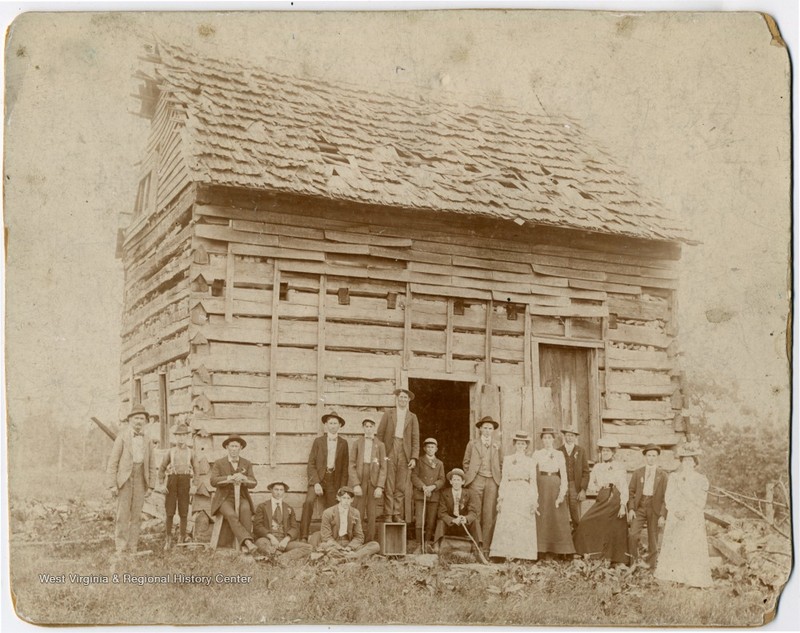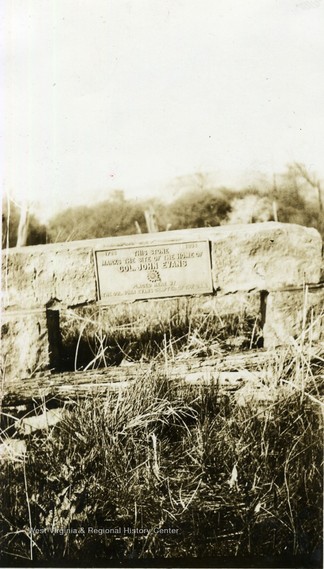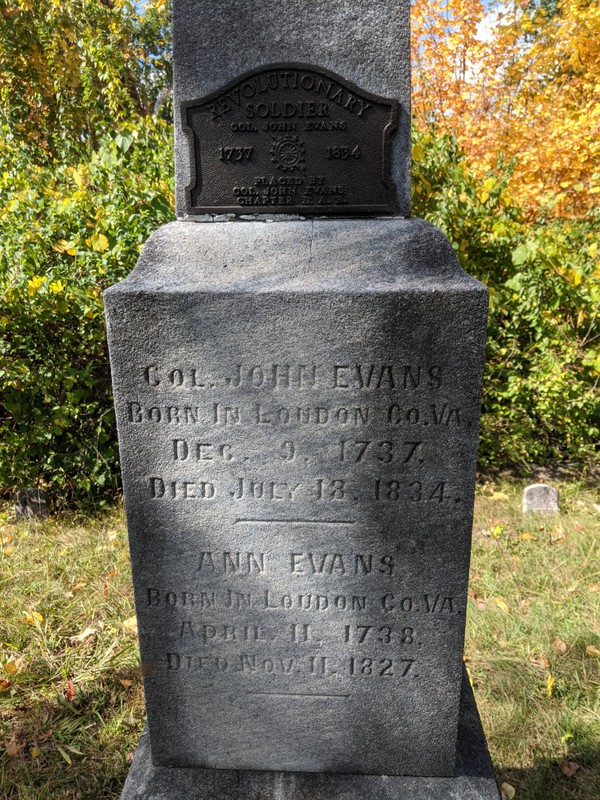John Evans (1737-1834)
Introduction
Text-to-speech Audio
Images
The farmhouse constructed by John Evans in 1769, photo ca. 1900.

Plaque commemorating John Evans' home. The stone arch of the plaque was rescued from Evans fireplace, where George Washington purportedly conducted business while near Morgantown.

Evans' grave.

Backstory and Context
Text-to-speech Audio
John Evans was born on December 9, 1737 near Fairfax, Virginia. Evans attended school in Alexandria, Virginia, and married Ann Martin. Sometime between 1765 and 1767, Evans crossed the Appalachian Mountains, eventually finding himself near the site of present-day Morgantown. He used a legal process known as Tomahawk Right – where one marks trees on a boundary – to claim approximately four hundred acres in the area now known as Evansdale, after its first white settler. Evans began to move his family to their new homestead in 1766, but stopped in Cumberland for three years after learning of the danger of Native American attacks. In 1769, Evans, his wife, his mother, three children, and a family of slaves arrived at their new home.
In Dunsmore’s War of 1774, Evans served as a lieutenant in the north-western region of Virginia. He continued to serve in the American Revolution, attaining the rank of colonel by the end of the war. The colonel returned to his home and assisted in the birth of Morgantown by serving as clerk of the Monongalia Court from 1782 until 1807. At the age of seventy-five, the aging Evans sold his farm to his son, also named John Evans. The elder Evans remained active in Morgantown politics before eventually passing in May of 1834. A historical marker for the site of Evans farmhouse was erected by the Daughters of the American Revolution, but this marker has since been removed. It sat near the current location of West Virginia University’s College of Physical Activity and Sport Sciences building on the Evansdale Campus.
Sources
Callahan, James Morton. History of the Making of Morgantown. Morgantown, WV. West Virginia University, 1926.
Core, Earl L. The Monongalia Story. Parsons, WV. McClain Printing Co., 1974.
Fetzer, Richard L. Col. John Evans, Friends of Fort Laurens. July 1st 2001. Accessed September 25th 2020. http://www.friendsoffortlaurens.org/Biographies_/Evans__Col_John.pdf.
West Virginia & Regional History Center. Accessed September 25, 2020. https://wvhistoryonview.org/catalog/034234.
West Virginia & Regional History Center. Accessed September 25, 2020. https://wvhistoryonview.org/catalog/038646.
Iain MacKay. 2020.
